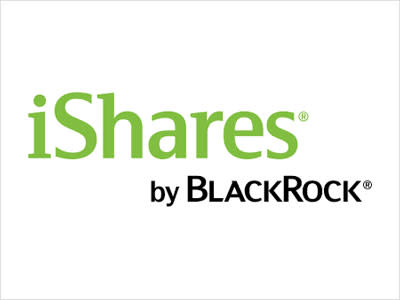BlackRock has been managing index portfolios since 1971
This fund provides low-cost exposure to a broad spread of companies in emerging markets
It’s closely tracked the FTSE Emerging Index since launch
This fund features on our Wealth Shortlist of funds chosen by our analysts for their long-term performance potential
How it fits in a portfolio
The iShares Emerging Markets Equity Index fund provides diverse exposure to emerging countries, such as China, Taiwan and India. Emerging markets are typically higher risk since they're at an earlier stage of development compared to their developed market peers.
An index tracker fund is one of the simplest ways to invest and can be a low-cost starting point for an investment portfolio aiming to deliver long-term growth. We think this fund could be used to diversify a global portfolio or could be a good addition to a portfolio of tracker funds.
Manager
Dharma Laloobhai is Co-Head of BlackRock’s EMEA Index Equity International Portfolio Management team. She’s responsible for fund managers based in London who manage developed and emerging market iShares equity index funds and ETFs.
Every equity index fund at BlackRock has a primary, secondary and tertiary manager, who each have the ability to run the fund, along with the wider team. The wider team is well-resourced and experienced in index investing.
BlackRock’s global approach allows them to work closely with their teams across the world, aiding more efficient management of their funds. We have positive conviction in Blackrock’s ability to provide simple and effective tracking options for investors.
Process
This fund aims to track the performance of the FTSE Emerging Index. It does this by investing in most, but not all of the index. Currently, the fund invests in 2,035 companies versus 2,228 in the index. This is known as partial replication and should help the fund track the index closely without the cost of holding every company. Companies that make up a very small part of the index are sometimes not held in the fund as they can be more difficult or expensive to buy and sell.
The FTSE Emerging Index covers most of the emerging stock market and provides exposure to 23 countries. That said China, Taiwan and India make up a significant amount of the index with around 73% of the fund invested here.
The technology, financials and consumer discretionary sectors make up a large part of the fund, accounting for 27.76%, 23.26% and 12.83% respectively. A proportion of the fund is also invested in smaller companies which are higher risk than their larger counterparts.
Keeping costs low is a key part of the team’s strategy to track the index closely. The fund managers communicate with local teams in emerging countries to ensure trades are placed at the best price, keeping costs low.
The fund can lend some of its investments to others in exchange for a fee in a process known as stock lending. This helps to offset some of the costs of running the fund. Since BlackRock’s lending program started in 1981, only three borrowers with active loans have defaulted. In each case, BlackRock was able to repurchase every security out on loan with collateral on hand and without any losses to their clients. Even so, stock lending adds risk.
The fund has tracking error targets, which measure how closely it's tracking its benchmark. These are monitored by BlackRock on a daily and monthly basis to ensure the fund is being run efficiently.
Culture
BlackRock is currently the largest asset manager in the world, running around $11.6trn of assets globally as of December 2024. The company was founded by eight partners including current CEO Larry Fink and is known for both active and passive strategies. Employees at BlackRock are encouraged to hold shares in the company so that they are engaged with helping the company perform well and grow. The iShares brand represents BlackRock's family of index tracking and exchange-traded funds.
As the world's largest asset manager, and with lots of resource and knowledge under its belt, BlackRock benefits from unique access to the marketplace, which can help reduce trading costs. BlackRock is also a pioneer in the passive investment space and has a track record of innovation in this part of the investment market.
The team running this fund works closely with various equity and risk departments across the business. We believe this adds good support and challenge on how to run the fund effectively.
ESG Integration
BlackRock was an early signatory to the PRI and has offered ESG-focused funds for several years, including through its iShares range of passive products. However, it only made a company-wide commitment to ESG in January 2020. Following that announcement, the company promised to expand its range of ESG-focused ETFs, screen some thermal coal companies from its actively managed funds and require all fund managers to consider ESG risks.
BlackRock’s Investment Stewardship Team aims to vote at 100% of meetings where it has the authority to do so. The Investment Stewardship team engages with companies, in conjunction with fund managers, and the results of proxy votes can be found on the BlackRock website’s ‘proxy voting search’ function.
BlackRock has courted controversy in recent years for failing to put its significant weight behind shareholder resolutions aimed at tackling climate change. It responded by committing to be more transparent on its voting activity and providing rationales for key votes.
BlackRock raised further concerns in 2022 when it indicated it might support fewer shareholder proposals based on environmental and social issues in the future. However, its support for shareholder resolutions has fallen dramatically, from 40% in 2021 to just 4% in 2024. BlackRock argues that many of the resolutions were overreaching, lacked economic merit or didn’t promote long-term shareholder value, but this reasoning has been met with some scepticism.
Of the funds under HL’s research coverage, this fund has one of the highest ESG risk profiles. The companies within the fund could therefore face increased regulatory scrutiny, reputational damage, and operational challenges, potentially impacting the fund's future performance. It’s also one of the most carbon intense funds, which adds risk.
However, the fund’s composition represents the exposure of the FTSE Emerging Index, and the team has no control over the companies included in this passive fund. Although, an ESG version of the fund is available.
Cost
The fund usually has an ongoing annual fund charge of 0.20%, but we’ve negotiated a 0.04% saving so it’s available to HL clients for 0.16%. We think this is excellent value for an emerging markets tracker fund run by a provider we rate highly.
Our platform charge of up to 0.45% per annum also applies, except in the HL Junior ISA, where no platform fee applies.
Performance
Since the fund launched in November 2009, it’s done a good job of tracking the FTSE Emerging Index. Over the last 10 years, the fund has returned 77.06%* versus 84.48% for the index. As you would expect from an index tracker fund, it’s fallen behind the benchmark over the long term because of the costs involved in running the fund. However, the tools used by the managers have helped to keep performance as tight to the index as possible. Remember, past performance isn’t a guide to the future.
Over the past 12 months to the end of February, the fund has risen 12.89%. China was the best performing emerging market, with most of its gains coming in the second half of the year. China has struggled in recent years because its economy hasn’t recovered as many had expected since its COVID-19 lockdown and there have been ongoing concerns around its property sector. But the Chinese stock market has rallied since the government announced stimulus measures aimed at boosting its economy.
Taiwan’s stock market also delivered strong returns. This was mainly driven by the success of Taiwan Semiconductor Manufacturing (TSMC), the world’s largest semiconductor company, which makes up 10% of the FTSE Emerging Index. TSMC has seen huge growth due to the strong demand for chips essential for the development of Artificial Intelligence (AI).
On the other hand, India detracted the most from the fund’s performance over the year. India had been one of the stronger emerging markets although this started to reverse following the unexpected election results. Foreign investors have withdrawn from the Indian market recently on fears that companies have become too expensive. Brazil was also a detractor, with high interest rates weighing heavily on the country.
Given BlackRock's size, experience and expertise running index tracker funds, we expect the fund to continue to track the FTSE Emerging Index closely in the future, though there are no guarantees.
Annual percentage growth
Feb 20 – Feb 21 | Feb 21 – Feb 22 | Feb 22 – Feb 23 | Feb 23 – Feb 24 | Feb 24 – Feb 25 | |
|---|---|---|---|---|---|
iShares Emerging Markets Equity Index | 23.90% | -5.50% | -3.28% | 3.09% | 12.89% |
FTSE Emerging Index | 22.93% | -3.95% | -4.78% | 4.27% | 13.88% |
The period between 29 February 2020 and 28 February 2022 reflects the performance of the D Class version of the fund. Performance from 28 February 2022 onwards reflects the performance of the S class version of the fund. This is due to when each share class was launched.


